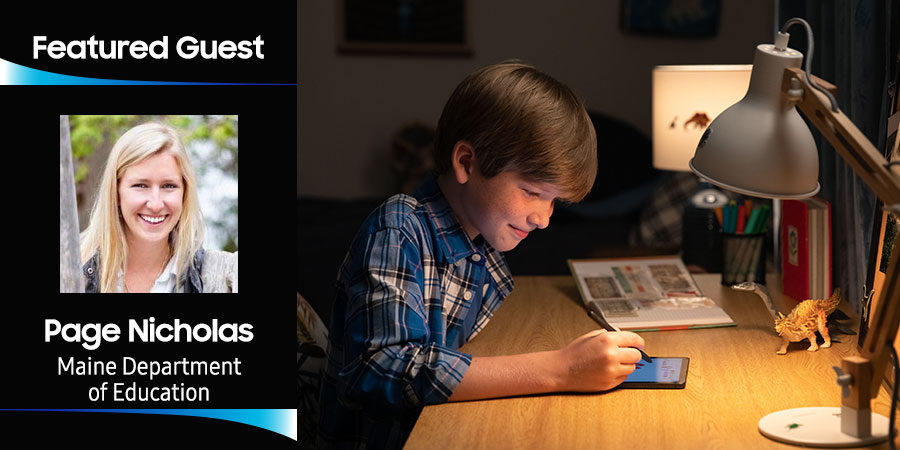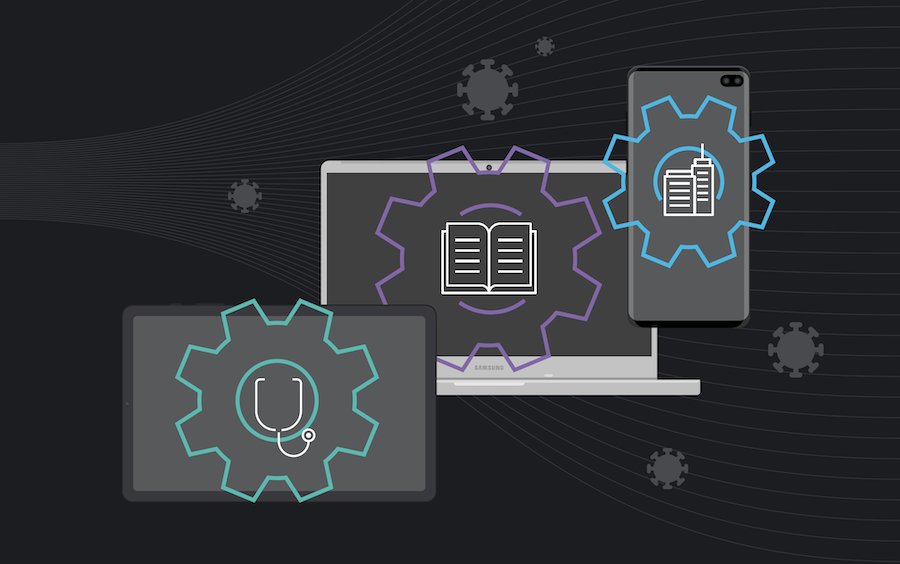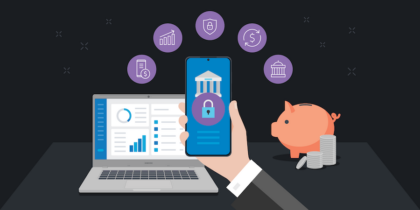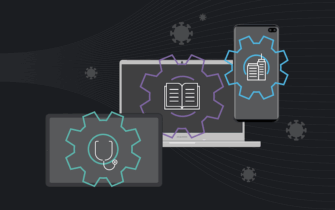Editor’s Note: This conversation is a part of our ongoing “Future State Of” series. It has been edited for length and clarity.
During the COVID-19 crisis, more than 120,000 schools across the U.S. have closed, requiring 55 million students to quickly adapt to a new virtual learning environment. And for many kids, the challenges of virtual learning have gone beyond the obvious of being away from friends, teachers and the classroom. Successful remote learning requires the right technology, and for those who don’t have access to these tools, there is a valid fear of falling behind.
Access has become an even greater challenge, as the growing demand for these solutions has created a shortage. With COVID-19 continuing to keep kids out of classrooms, how can school systems support students and teachers with virtual learning? What roles should governments and technologists play in improving access?
Taher Behbehani, GM and SVP of Samsung B2B, sits down with the Chief Innovation Officer for Maine’s Department of Education, Page Nichols, to discuss how school systems can navigate the ongoing crisis, ways to close the digital divide, and what’s next in education. The pair will also discuss how Samsung and Maine partnered to give preK-12 students across the state access to the virtual classroom with Samsung Knox for Education, which replicates the interface and capabilities of a Chromebook on a tablet.
Taher Behbehani: Hi Page, thank you for speaking with me today. It’s absolutely a pleasure. We live in interesting times. Elections. The pandemic. Economic hardship. What are your thoughts when reflecting on our current situation?
Page Nichols: Thank you for having me. I’m trying to focus on what the opportunities are in the very challenging situation we’re in. One thing that has buoyed me through this process is working with educators. Because when you’re faced with students every day, whether or not they’re before you in-person or virtually, educators don’t really have the choice to hide from what’s going on. And we’ve seen in Maine, and I think across the nation, just unbelievable resilience and the ability to pivot from what they know — and how they know how to deliver instruction — to completely new ways.
TB: Educators are heroes and the frontline support of our communities. It’s extremely important. How do you get the insight, or the thinking around what’s next? Who do you go to as educators to formulate your strategy?
PN: Throughout this process, our team in the commissioner’s office has met with superintendents consistently to problem-solve these things together. I think one thing, which is maybe an opportunity out of this, is that we’ve been able to meet a lot more often with superintendents, more than we did previously. So, I think that communication has been really important because we’re problem-solving these issues together and one superintendent might have a really cool idea that they bring to the table that another hadn’t heard of. And then we’re taking all of that information and trying to develop guidance out of what we’re hearing. Largely, our role is to fill the gaps in where educators and administrators need support right now. So, we’re looking for stakeholder input widely as we make decisions.
Emerging changes from the pandemic era
See key learnings and statistics from the Future State of Business 2020 survey and report. Read Here
We also have 32 students in grades 4 through freshman year of college who work as an advisory cabinet to the commissioner. And they’re a really great resource to us because we’re hearing from the students who are experiencing it. We’ve also done focus groups with parents, teachers, counselors and school leaders. So, we’re really trying to get the full picture as we develop the guidance that we provide.
TB: That’s fantastic. It’s almost as though you are creating a whole new business plan or startup for education, right? Getting input, understanding what the customer needs — or in this case, what your student needs are — understanding the gaps, then planning. Technology has become the mainstay of all of this. Give me your sense of where you were at the beginning of the year and where you are now.
PN: In 2001, Maine developed a program called the Maine Learning Technology Initiative (MLTI), which initially provided one-to-one computing for all seventh-grade students in the state. Obviously, almost 20 years later, that program has had to evolve, but what’s nice is that when we had to quickly respond to the immediate needs in the spring, we had an existing infrastructure for distribution. For instance, all of our school districts have a technology director. So, we had that contact immediately. And I think in that way, compared with other states, we were well positioned to do this very quickly. Our team has spent the last year reexamining the MLTI, revamping it to meet the current needs, and we’ll be rolling out version 2.0 in January.
TB: What are the main “aha moments” that you see looking back on this year, learnings that you would want to impart on others? And how would you apply them going forward?
PN: We’ve learned a lot throughout the process, and we did it in phases. The reason for that was we put out a survey to collect information of where the needs for devices were. At some point, we had to close the survey so we could place orders for devices for students. As you well know, inventory was flying out of warehouses, and so we had to work pretty quickly and do it in a few phases. So, each subsequent phase, we learned a little more about what would help make this process truly supportive to schools, and I think it was largely around communication. For instance, when we issued the devices in the first round, they just showed up at schools. We hadn’t prepared them with what they would need to know to set up the devices. Following that, we put together a clear webinar, a one-pager with the exact steps, and our team was providing office hours to work with the directors to set those up. So, I think those kinds of things were crucial, and again, through every phase of our process, we learned a little more about what is important in making this happen effectively and efficiently.
TB: That’s fantastic. And I have to compliment all you have done because you also pushed us to come up with solutions, knowing that inventory was limited. We had to scratch our heads and say, “What do we do? How do we get devices? And how do we connect students?” And I think the solution was creative on both of our parts. So, I thank you for partnership on that.
In terms of how students end up using technology — and how teachers are using it — tell me the progression. Are they becoming extremely tech savvy? Is this becoming a normal routine that will persist after this phase is over?
PN: Yeah, I think in the spring when the devices were issued, the most important piece, in my opinion, was just that students were connected to the adults in their schools, and particularly students who are living in unsafe homes. I think just having that connection, whether it was videoconferencing or voice conferencing, was really critical, and I would go so far to say even lifesaving in some cases.
I think beyond that, our MLTI program is really focused on how we learn about the technologies and how to leverage what exists. That includes a lot of professional development. And knowing that computers now are what, when I was in high school, was a textbook. There’s so many opportunities in that.
TB: I really appreciate that insight you shared, the connection you made to the impact of this beyond education. The word you used was “lifesaving.” It’s powerful, right? Students came to school, they felt safe. And now this digital connection is sort of their lifeline in many respects. That inspires a whole new thinking around what technology means to people. We knew it connected us on a basic level, and of course in a productivity manner, but this is absolutely essential.
PN: Yes, absolutely.
TB: Looking ahead, the students entering school next year, how will they learn? What do you think will be happening in the educational technology realm?
PN: The word that comes to mind is relevance. I think in small pockets there are teachers and educational leaders that were using technology in ways that were relevant. But largely, policy-wise, I think we have a long way to go. I think this experience has really highlighted what is relevant.
I also know that students need a combination of time on the screen and time off the screen, and so I think we need to be figuring out ways of integrating the two. We’re lucky in Maine to have all these natural resources, so how do you take what a student is doing with technology and then apply it to interacting with the natural world without a computer or tablet?
I keep mentioning the opportunities in all of these challenges we’ve been faced with, and I think that is one of them. Let’s look at what isn’t working anymore, and not use it.
TB: Do you think the purpose of educational systems is now shifting from providing, let’s say, teaching material or schooling, to one that provides more of an open platform for education? How does that work? Is it either “I’m confined now to the physical school, but in a digital manner”? Or “I have a digital platform and I can go wherever I want to learn”?
PN: I would go more to the second platform of what you said. That it’s really about facilitating learning. And again, in smaller pockets, there are teachers that are trying to make that happen, and certainly educational leaders that are trying to lead that work. The internet, of course, provides endless opportunities. But learning happens in everyone’s experience every moment. I think one of the things that will come of this is that will be more widely recognized. And the idea of a brick and mortar institution where students come and sit at desks or tables will not be as popular.
TB: That’s really interesting. We’re trying to figure out collectively how do we bring down the cost of connecting to the world? How do we create solutions that are easy for everyone to use? How do we make this work at scale? What advice do you have on that? What is going on in Maine that we can replicate?
PN: Through this process, I would say what has been key for us in working with various partners — and again, it comes to communication — is having a person or a team of people that we have been able to build a trusting relationship with. That’s happened for us at Samsung. I think that’s a really important part of it.
At the federal level, the Federal Communications Commission (FCC) has a lot of authority to update current regulations, which are really important to moving this work forward. For instance, one example would be changing the e-rate regulations to allowing connections to student homes. We’re working across agencies and with our national delegation on this exact thing. We’re also working on a project with our Department of Economic and Community Development right now to expand broadband. We’re going to get more homes where students live wired for broadband. I think the shared work is really important. It’s those types of conversations that are really important. And just opening up the conversation.
TB: That’s extremely useful insight. And thanks for being a great partner and advisor to us. We feel privileged to be partnering with you and to help in these times of need. Thank you so much for your time.
PN: We really appreciate the partnership as well. And we’re certainly grateful to Samsung. We have nearly 24,000 kids that are now connected that weren’t previously. So, we are really grateful for the partnership.
Explore the ways Samsung’s remote learning solutions are helping schools keep up with the new normal. And keep up to date with the latest announcements and insights by following Taher Behbehani on Twitter.













